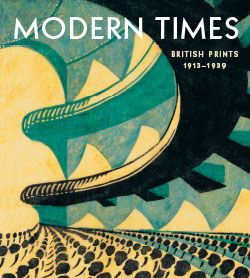The Merry-Go-Round
Cyril E. Power British
Not on view
The Merry-Go-Round, which was inspired by a visit to the Wembley Exhibition Fun Fair in London, conveys the dynamism of contemporary life. In order to depict symbols of modernity—such as race cars, subways, sporting events, amusement parks, and machinery—Power and other students at London’s Grosvenor School of Modern Art embraced the linoleum cut, a relief-printmaking technique related to the woodcut. Linoleum, an inexpensive, synthetic material, was easier to carve than wood and allowed artists to realize a greater variety of effects, such as flat planes of color, diverse textures, and long, sinuous lines. The strength of the material enabled artists to pull a greater number of prints without compromising quality; the resultant prints were then sold at lower prices, thus reflecting the group’s democratic aspirations.
Due to rights restrictions, this image cannot be enlarged, viewed at full screen, or downloaded.


